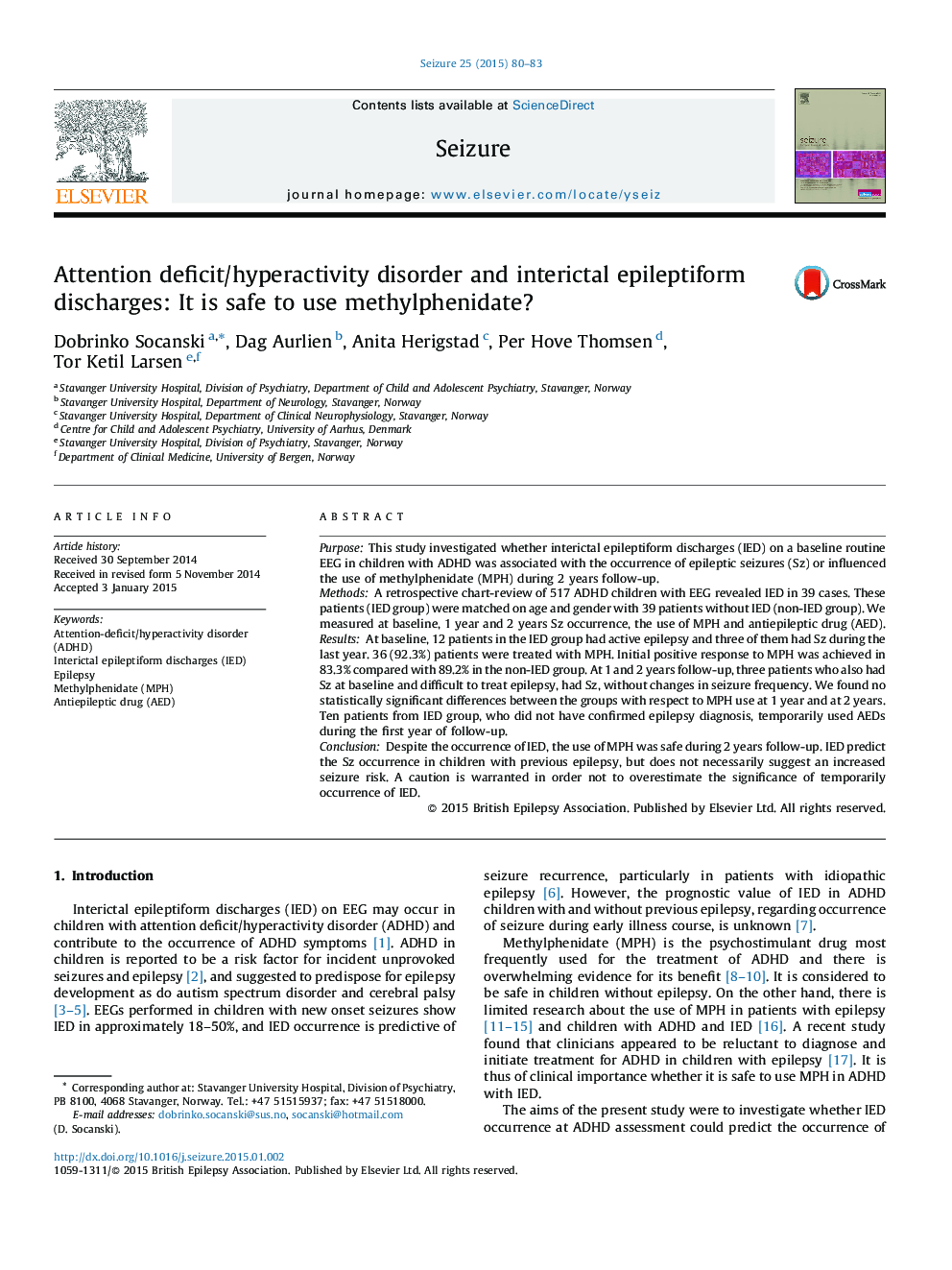| Article ID | Journal | Published Year | Pages | File Type |
|---|---|---|---|---|
| 340528 | Seizure | 2015 | 4 Pages |
•Interictal epileptiform discharges (IED) and epilepsy occur more often in ADHD.•The use of methylphenidate was similar in ADHD children with and without IED.•No increased occurrence of epileptic seizures during 2 years follow-up.•Not to overestimate the significance of temporarily occurrence of IED in ADHD.
PurposeThis study investigated whether interictal epileptiform discharges (IED) on a baseline routine EEG in children with ADHD was associated with the occurrence of epileptic seizures (Sz) or influenced the use of methylphenidate (MPH) during 2 years follow-up.MethodsA retrospective chart-review of 517 ADHD children with EEG revealed IED in 39 cases. These patients (IED group) were matched on age and gender with 39 patients without IED (non-IED group). We measured at baseline, 1 year and 2 years Sz occurrence, the use of MPH and antiepileptic drug (AED).ResultsAt baseline, 12 patients in the IED group had active epilepsy and three of them had Sz during the last year. 36 (92.3%) patients were treated with MPH. Initial positive response to MPH was achieved in 83.3% compared with 89.2% in the non-IED group. At 1 and 2 years follow-up, three patients who also had Sz at baseline and difficult to treat epilepsy, had Sz, without changes in seizure frequency. We found no statistically significant differences between the groups with respect to MPH use at 1 year and at 2 years. Ten patients from IED group, who did not have confirmed epilepsy diagnosis, temporarily used AEDs during the first year of follow-up.ConclusionDespite the occurrence of IED, the use of MPH was safe during 2 years follow-up. IED predict the Sz occurrence in children with previous epilepsy, but does not necessarily suggest an increased seizure risk. A caution is warranted in order not to overestimate the significance of temporarily occurrence of IED.
